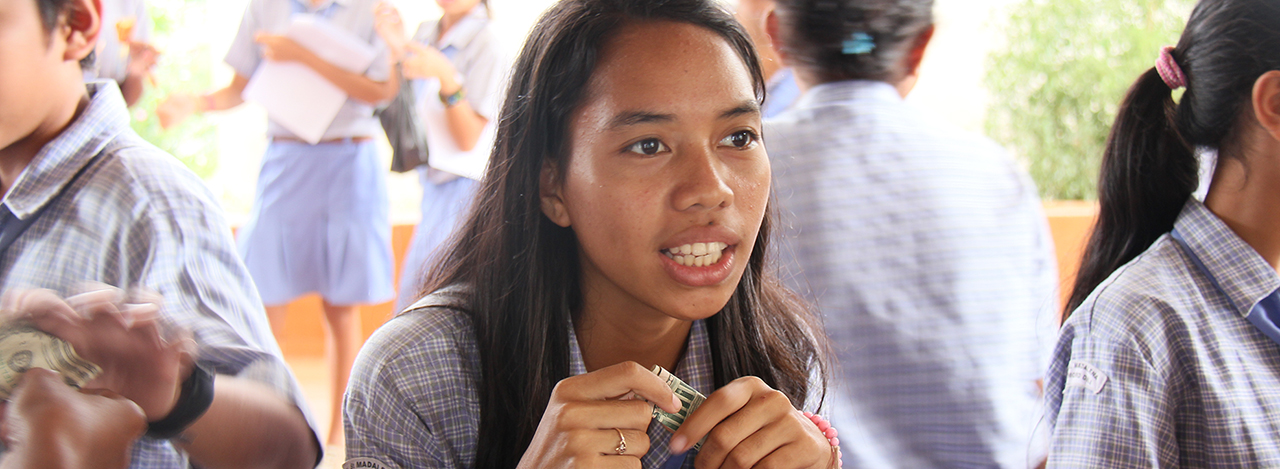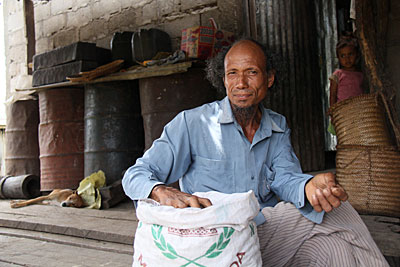

East Timor: Planting for Children
Care of the smallest children in East Timor often falls to mothers. They wipe runny noses and labor over cooked-from-scratch meals, and meet the youngest children's needs while attending to demands from older siblings. Fathers also provide some of this direct care, but it's a rare enough occurrence that Inacio dos Santos stands out.

While he held his young daughter, he talked about how Catholic Relief Services has helped him earn enough cash to pay for her immediate needs and ensure a stronger financial footing in the decades to come.
For farmers like Inacio who own small plots of land, much of the harvest is directed to the family's table. A locavore's dream, the food is sufficient for the months immediately after harvest. But families need to eat between harvests too. Without another source of income, they find it difficult to survive lean seasons and pay for school, medical care and other expenses.
So they look to the candlenut tree to help them care for their children between harvests and well into the future. They often sell their candlenuts to traders who export the nuts, which are used as a spice and an ingredient in beauty products.
CRS has long helped farmers in East Timor organize into associations to sell their candlenuts at a better price, improve the quality of their harvest and start nurseries to grow new trees, which the group distributes to other members. It's the prospect of new trees and future harvests that excites Inacio and group members.
"I have planted 70 new trees," says Inacio—nearly double his original plot of 40 trees. "I planted them for the next generation. My children and grandchildren will benefit from more income."
Candlenut trees do not produce for 5 to 7 years, so families will not begin to see greater harvests for many seasons. Although older farmers do not know if they will live to see the trees fully mature, they enthusiastically clear land by hand to plant young saplings.
Pedro de Silva, a grandfather in another candlenut group, knows his labor will provide income to his descendants for 50–100 years. "I am an old man," he says, "and I will not take full advantage of the new candlenut trees. I am planting for my children. I work in the sun for my children. I hope the price of candlenuts will go up, helping my family pay for education and homes in the future."
Pedro and Inacio care about a better future for their children. With the strong foundation of knowledge and new trees, they are pursuing the dream of leaving a strong legacy for the next generation.

